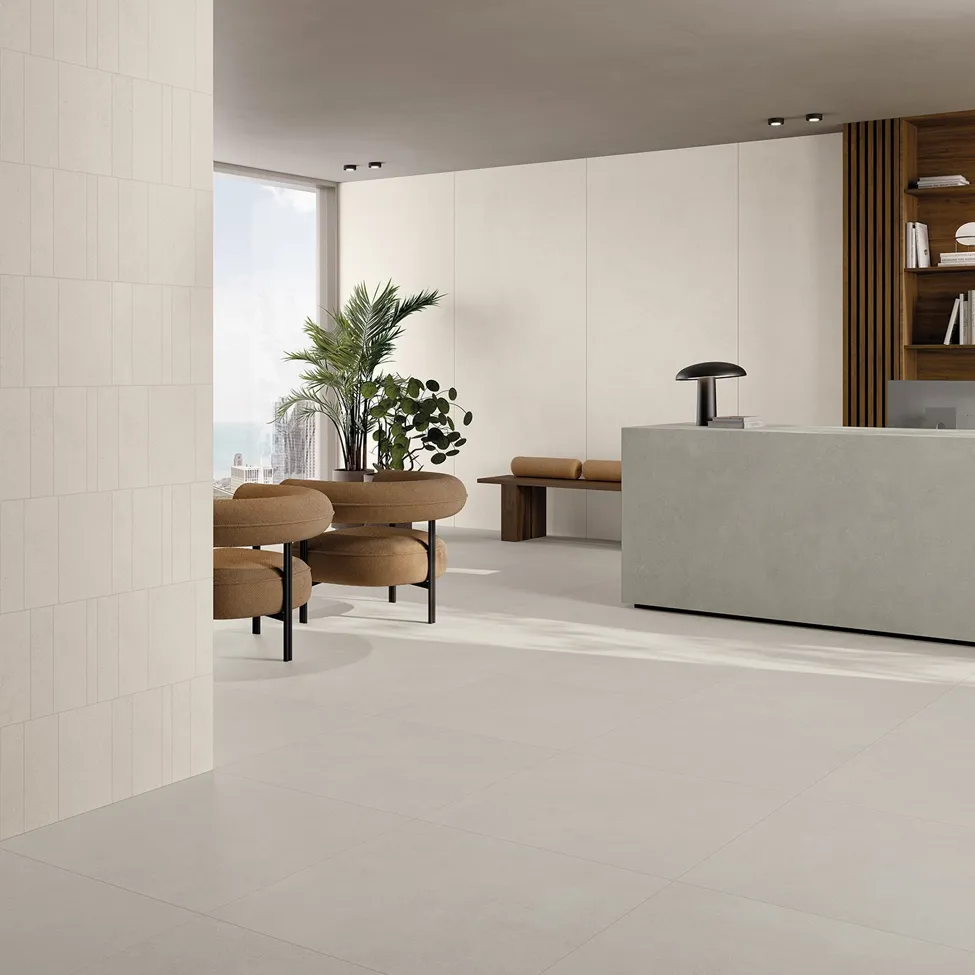The compact structure of porcelain stoneware, derived from a process of pressing and firing at high temperatures, guarantees an optimal combination of two essential characteristics: a high thermal conductivity coefficient and the possibility to produce tiles with a reduced thickness, thus ensuring a rapid, efficient heat exchange. This optimal combination enables a rapid, even spread of heat throughout the setting, overcoming the limits of other materials such as marble or granite, which, although they have good conductivity, require greater thicknesses, which negatively impacts efficiency.
Another decisive aspect when it comes to choosing tiles is how they react to temperature changes in the system, which operates at between 25 and 40 degrees. A distinctive feature of porcelain stoneware is its thermal expansion of virtually zero, which means it is practically unaffected by changes in temperature. This characteristic is essential to keep the flooring in prime condition, avoiding the problems that typically arise with materials with high thermal expansion, such as cracking or detachment, which could damage both the appearance and the functioning of the entire heating system.














